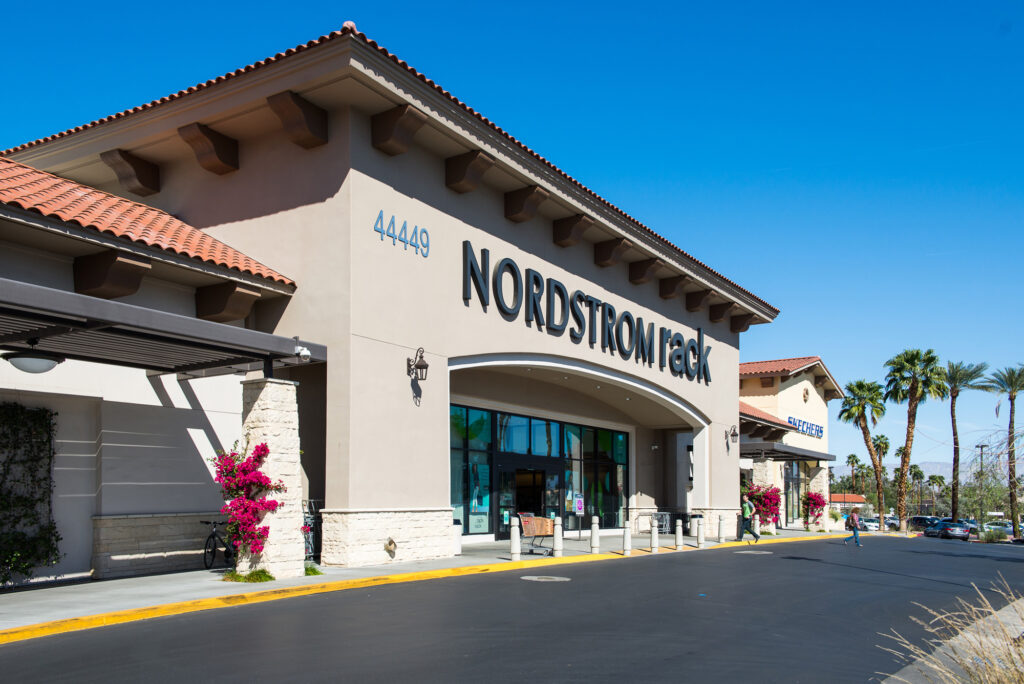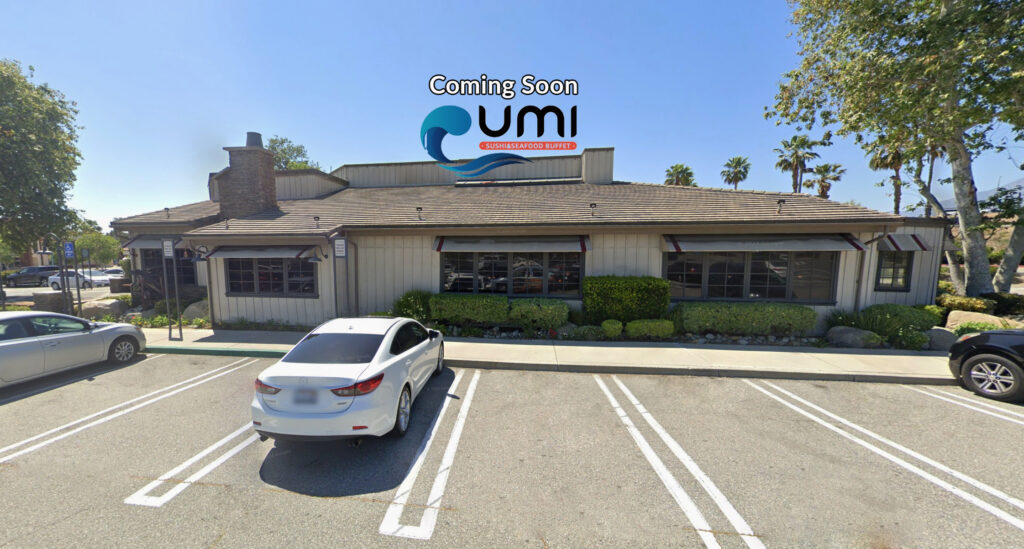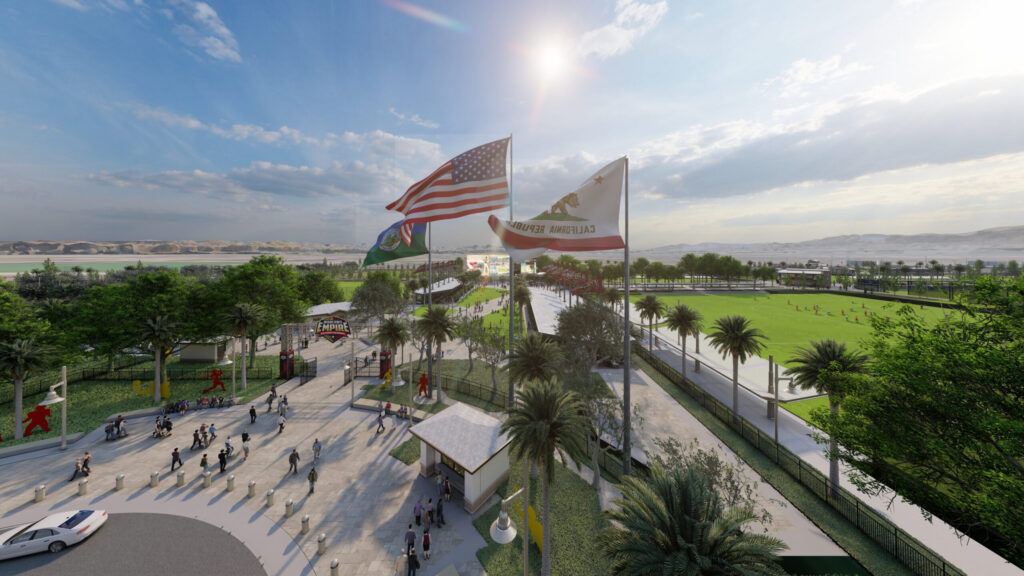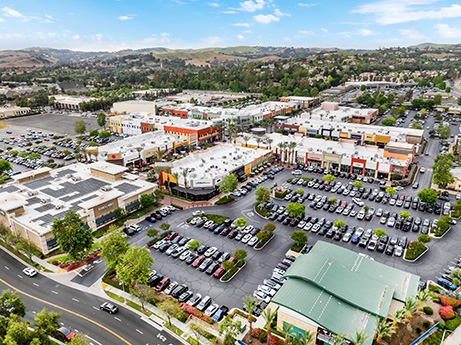Targeted activity is propelling California’s retail market forward as investors chase core assets and consumers drive demand, despite the continued presence of high costs and development hurdles.
California’s retail market is a bit of an enigma nowadays. That’s because it’s both resurgent and restrained, as Jimmy Slusher, senior vice president of CBRE’s National Retail Partners-West team, notes.
“Retail in California remains resilient despite a more complex economic and political backdrop,” he explains. “While interest rates remain elevated, debt capital for retail has increased, with strong lender demand and relatively tight spreads supporting transaction velocity and pricing. Higher construction and labor costs have limited new retail development, creating a favorable backdrop for existing retail assets. Consumer spending has held up, with sustained demand for certain categories and concepts.”
This push-pull dynamic is the result of several years of volatility. Pandemic-era uncertainty gave way to record transaction volumes in 2022, with CBRE noting more than 100 statewide retail transactions that averaged $53 million that year. This was followed by an investment slowdown as interest rates climbed.
But confidence is returning. Slusher attributes this about face to a mix of factors, including increased lender allocations, an influx of inventory and overall investor sentiment toward the retail sector, among a few other things.
“Further enhancing investor sentiment is the mainstream media’s coverage of public REIT disclosures confirming property-level fundamentals,” he continues. “There have also been major investments from brand-name investors, such as Blackstone’s acquisition of ROIC, that have pushed the spotlight onto retail in 2025.”
That doesn’t mean the road ahead is clear. High costs and high regulations remain part of the equation, tempering the speed of recovery and keeping many investors focused on only the strongest opportunities.
Capital Flows, But With Caveats
As Slusher alludes to, investors are attracted to certain elements of this market. Higher-value assets, for example, are trading at a volume not seen in years.
Single-asset retail trades over $25 million are on pace to return to — or even exceed — historical averages in both total volume and number of transactions, notes CBRE. The average price per transaction is also trending toward the highest the firm has seen in nearly a decade, with year-to-date trades averaging $63 million.
“We have seen a notable increase in transaction volumes for assets over $25 million compared to the previous two to three years, specifically in the neighborhood grocery-anchored segment, across both single-asset and portfolio transactions in 2025,” Slusher adds.
Bill Asher, executive vice president of Hanley Investment Group Real Estate Advisors (HIG) in Corona del Mar, has also witnessed a large uptick in activity. HIG’s listings, closings and total sales volume were up by 30 percent year over year compared to the second quarter of 2024.
“The market is being driven largely by the search for yield in today’s higher interest rate environment,” Asher says. “We are seeing strong buyer interest across all multi-tenant retail categories, including grocery-anchored centers, strip centers and even power centers as confidence in retail fundamentals continues to grow.”
Interest in multi-tenant assets has increased so significantly that multiple private and public funds have been established specifically to target this product type. Then, of course, there was Blackstone’s $4 billion acquisition of ROIC, a portfolio largely composed of grocery-anchored shopping centers.
Investment activity is picking up across Southland regions as well. Chris Premac, vice president of retail brokerage at Coreland Companies, points to two record-setting July transactions in Orange County as evidence of the strong investor appetite in today’s market. This includes Regency Centers’ purchase of a five-property Rancho Mission Viejo shopping center portfolio for $357 million, as well as Space Investment Partners’ acquisition of the grocery-anchored Fullerton Metrocenter in Fullerton for $118.5 million.
“Retail shopping centers in Southern California remain a highly sought-after product,” Premac says. “There has been an uptick in investment sales with several record-setting transactions, including these nine-figure deals that prove the strength of anchored retail centers in Orange County.”

The newly renovated One Eleven Town Center in Palm Desert is anchored by Whole Foods and Nordstrom Rack. Schnitzer executed new landscape renovations, additional signage, custom-designed desert palette exterior paint and other enhancements to ensure it remains a dominant retail community shopping center within the Coachella Valley.
This strength extends beyond county lines, with Premac noting the average vacancy rate for Southern California shopping centers is about 4.1 percent, compared to the national average of 4.9 percent. While vacancy is low, some of this empty space is due to sizeable closures.
“There has been a wave of national retailer bankruptcies in the past year,” says Jordan Schnitzer, president of Schnitzer Properties. “Many have been on watchlists for years, and several have failed after recent restructurings.”
Major chains including Joann Fabrics, Big Lots, Forever 21, Claire’s, 99 Cents Only Stores and Rite Aid have made recent headlines for all the wrong reasons. They’ve joined the Chapter 11 club, which has resulted in the closure or liquidation of hundreds of locations.
“The Rite Aid bankruptcy — which was a long-time coming — added a number of mid-sized boxes to the marketplace, yet with Walgreens going private and CVS announcing a large number of store closures, that puts downward pressure for rents, as well as making it more difficult to justify new construction,” adds Sandy Sigal, CEO and president of NewMark Merrill in Calabasas.
Sigal believes some retailers, such as Big Lots and 99 Cents Only Stores, would have been able to restructure or survive had they been able to sell a portion of their stores in a “normal market” — but few things are normal today.
Fortunately, interest in certain California shopping centers extends beyond investors. With vacancy tight, there are many tenants looking for room.
“In each case, there is the opportunity to improve activity with a new, more relevant retailer,” Schnitzer says.
Active owners are doing just that. Coreland recently executed two Sky Zone Trampoline Park leases in North Orange County, backfilling more than 60,000 square feet of former grocery space, while NewMark Merrill has inked deals with Burlington, Ross, Marshalls and Sprouts.
Categories Carrying The Market
“Bankruptcy” may be a dirty word in retail, but it’s clear that many of these new vacancies are setting the stage for further growth. Much of this growth is occurring in existing spaces, as the costs associated with new development are unattractively high in many instances for both landlords and tenants.
“We’re seeing increased reuse of existing retail properties,” Asher says. “Demand is strong for vacant or underutilized assets — particularly former single-tenant buildings and dark anchors at shopping centers — not just for their location, but for their potential to be remodeled and repositioned.”
This approach has become a more cost-effective way for tenants to expand since new ground-up development has slowed. Asher notes this shift is a direct result of plateaued rents and higher land and construction costs, which have reached an inflection point in the market.
This places landlords who are willing to reinvest in a prime position.
“The opportunity to invest in a tenant upgrade for a space brings old lease rates to market and, in some cases, is the springboard for a broader redevelopment of a shopping center,” Schnitzer adds.
The tenants most eager to step into these spaces fall into a handful of proven categories, including quick-service restaurants (QSRs), specialty grocers, off-price retailers and experiential concepts.
“This year, the retail market continues to be defined by strong demand for internet-resistant concepts, particularly quick-service restaurants with drive-thrus, alongside essential services,” Asher says. “Consumers prioritize convenience and accessibility, which drives the success of these formats.”
These spaces are so sought-after that HIG recently closed four Dutch Bros Coffee drive-thru transactions within 40 days, three of which were in California. This included a $4.6 million sale of a multi-tenant pad with an endcap Dutch Bros in Fresno that generated seven qualified offers; an off-market $2.8 million sale in Riverside; and the nearly $2.6 million sale of a larger-format Dutch Bros in El Centro, a former Wendy’s building that became the brand’s first location in the Imperial Valley.
Brad Umansky, president of Progressive Real Estate Partners in Rancho Cucamonga, notes restaurants are among the most aggressive tenants when it comes to reusing second-generation space, particularly former QSR and fast-casual boxes.
“Quality space — especially restaurant space — is commanding the highest lease rates I have ever seen in my 30-plus-year career,” he says. “These are not lease rates that are just a little above what the previous tenant might be paying, but potentially a lot.”
As evidence of this, Umansky notes that one of Progressive’s brokers recently signed a big box deal with a lease rate that was 50 percent higher than what he was expecting.
“This is simply a reflection of the costs of doing business in certain portions of the marketplace,” he continues.
This momentum isn’t limited to investment sales. Tony Camargo, deputy city manager of the City of Victorville, reports that QSRs are some of the area’s strongest-performing retailers.
“Victorville is experiencing dynamic retail growth, particularly in the quick-service restaurant sector,” he explains. “As residential growth continues, the city continues to see more retail development and new brands eager to meet the high demand of our rapidly expanding region.”
New additions to Victorville include the city’s first Raising Cane’s and Pollo Campero; its second Six Beans Coffee; and its third Dutch Bros.
While major chain expansions tend to garner the most coverage, Umansky sees particularly strong momentum from independent operators. Asian and Hispanic restaurateurs have been the biggest standouts in the Inland Empire. Over the past year, Progressive has signed leases with Chinese, sushi, dumpling, Boba, noodle shop, Filipino, Vietnamese and Korean restaurant concepts, including Umi Sushi, which leased a former Claim Jumper in Rancho Cucamonga.

Independent food-and-beverage operators, particularly Asian and Hispanic restaurateurs, have been very successful in the Inland Empire. This includes Umi Sushi, which leased a former Claim Jumper space in Rancho Cucamonga.
The firm has also signed multiple Hispanic-oriented concepts, including Taquerias 2 Potrillos, La Michoacana Ice Cream and Don Jose Mexican Restaurant. This activity is particularly notable as California’s new fast food minimum wage placed added pressure on operating costs, highlighting the resilience of these independent QSR operators.
“Despite the increase in fast food minimum wage, independent and regional restaurant operators, especially Asian concepts, continue to aggressively expand,” Umansky adds.
Schnitzer further points out that many tenants are rightsizing to adapt to changing market conditions, including increased costs. This has led some anchors to shrink, QSRs to relocate to pads or drive-thru formats and entertainment tenants to go big.
Entertainment has certainly been a powerful draw in the post-pandemic, online shopping era. Few Southern California cities have embraced entertainment more than Ontario. The city is investing heavily in projects that combine sports, entertainment and lifestyle retail. The Ontario Sports Empire, a 200-acre district anchored by a new Minor League Baseball stadium set to open in 2026, will bring more than 1.2 million annual visitors with its mix of sports facilities, hotel and retail corridors.
The city is also building out an Arena District surrounding Toyota Arena that will add apartments, a pedestrian plaza, and new commercial and entertainment space, with future phases slated for a luxury hotel, music venues and a performing arts center. Ontario’s Convention Center is doubling in size, while the city’s downtown is being revived through adaptive reuse and mixed-use projects like C-Block and D-Block.
“These projects highlight how Ontario is redefining retail around destination-driven experiences that combine housing, retail and entertainment,” says Jennifer McLain Hiramoto, executive director of the city’s economic development agency.
McLain Hiramoto adds that many of these efforts were motivated by the desire to prevent leakage to other nearby regions.
“The main challenge is keeping spending local,” she continues. “For years, many residents traveled to Los Angeles or Orange County for jobs and entertainment. Our strategy is to capture that demand here by creating districts, such as the Sports Empire, Arena District and cultural hubs, that bring those opportunities closer to home.”

The Ontario Sports Empire in Ontario is a 200-acre district anchored by a new Minor League Baseball stadium set to open in 2026.
The city has a reason to be optimistic about its entertainment and lifestyle-driven efforts. Aside from its Toyota Arena concerts, minor league hockey team and professional indoor soccer team, Ontario has the No. 2 best-performing TopGolf in the nation, behind only Las Vegas.
“Many retail categories will continue to grow because Ontario’s mix of housing, demographics and income levels creates a broad consumer base that supports both upscale and community-focused retail,” McLain Hiramoto adds.
Ontario isn’t the only Inland Empire city where entertainment is driving momentum. Just 40 miles east, Moreno Valley is leaning into similar trends with a large emphasis on mixed-use. Moreno Valley Mall’s redevelopment will add more than 1,600 residential units, a hospitality district and an entertainment-focused retail experience.
Melissa McClain, economic development manager for the City of Moreno Valley, notes that recent additions like Sprouts, Texas Roadhouse and Raising Cane’s show how national brands have responded to the city’s strong demographics and above-average retail sales.
“Our retail sales consistently outperform national chain averages by up to 26.5 percent,” she says. “For investors, Moreno Valley offers a rare combination: population growth that’s outpacing the region, an active hotel development pipeline, and direct access to Fortune 500 employers and global logistics operators.”
For McClain, those stats translate to daytime demand, weekend traffic and long-term stability, proving not just the viability of retail assets in this market, but the potential for appreciation.
“Retail centers in Moreno Valley stand out because they’re strategically positioned within one of the fastest-growing, most demographically diverse cities in Southern California,” she continues. “The most successful projects here are intentionally located near new master-planned housing communities, high-performing schools, and our expanding healthcare and logistics corridors, creating built-in, daily demand.”
Momentum Meets Limits
Much like the state’s retail market as a whole, development in California is a paradox. So many parties — from developers and cities to tenants and consumers — would love to see more of a good thing. The shoppers are here, the lifestyle is here, the tenants want to be here and the developers, well, they wish it were easier to build here.
First, there are the current nationwide challenges.
“There’s lots and lots of uncertainty,” Sigal says. “Credit compression, no solid indicators on interest rates and an untested perspective on tariffs are on everyone’s minds.”
Asher adds that tariffs can also increase construction costs and create supply chain worries.
Then there’s the statewide hurdles.
“Construction costs, permitting timelines and utility requirements continue to pose significant roadblocks for leasing and development activity,” Premac adds. “In short, everything costs more and takes longer to build, no matter the scope or size.”
The pinch from these added cost and timeline pressures are being felt throughout SoCal.
“While Victorville continues to grow, the past 12 months have brought conversations with investors and developers about the caution surrounding future projects due to uncertainty in the national market,” Camargo says. “Although Victorville has not been directly impacted by these challenges, feedback from investors, tenants and developers indicates that concerns regarding potential market volatility has prompted a more measured approach to moving projects forward.”
Cities that want to continue attracting developers and tenants are doing what they can to offset these challenges. Victorville, for one, has streamlined the front end of its entitlement process through tools like a free pre-submittal application, which routes projects to all city departments for coordinated feedback within two weeks. Paired with an online permitting system and a one-stop shop that connects developers directly with staff, these efforts are designed to cut costs, speed up timelines and give investors more confidence in moving forward.
“These are key ways the city can support developers, investors and businesses during uncertain times,” Camargo adds. “We are continually exploring strategies to make it easier for retailers and developers to bring projects to market.”
Moreno Valley has taken a similar stance, offering early coordination and proactive support to help projects get off — or out of — the ground. The city has emphasized master-planned growth strategies, infrastructure investments, and an active development team that works directly with retailers and developers to navigate hurdles.
“We continue to attract investment through fast-track permitting, concierge-level development support and reliable infrastructure,” McClain says.
The city implemented digital permitting platform Simplicity to allow developers and tenants to submit, track and manage their approvals entirely online. It’s also driving value through local incentives. This includes the Hire MoVal program, which offers financial incentives to businesses that hire local graduates and veterans, along with electric utility rate reductions for hiring Moreno Valley residents.
“As a city, we offer concierge-style development support and explore creative deal structures to get projects moving and to create a retail environment that’s built for long-term success,” McClain continues.
Of course, a lack of development isn’t always a bad thing. Not if you’re a landlord or tenant who’s already planted your flag.
“In California, regulatory hurdles and wage laws continue to elevate development costs, but they also enhance the scarcity value of existing assets in high-barrier markets,” Slusher adds.
The opportunity for investors is there, Asher believes, as long as a good degree of mental fortitude is also present.
“For investors, this is a moment of strategic patience,” he advises. “The market is currently in a state of adjustment, and this creates a unique opportunity for those with patient capital to acquire well-located, high-quality retail assets with strong fundamentals at attractive returns.”
Asher further notes that assets backed by national tenants, long-term leases and inflation-hedging rent escalations are positioned to perform well regardless of broader market swings. For him, the long-term potential is clear. The key is whether investors can navigate today’s higher cost of capital and match the exacting standards of increasingly selective buyers.
— Nellie Day
This article originally appeared in the September 2025 issue of Shopping Center Business magazine.


